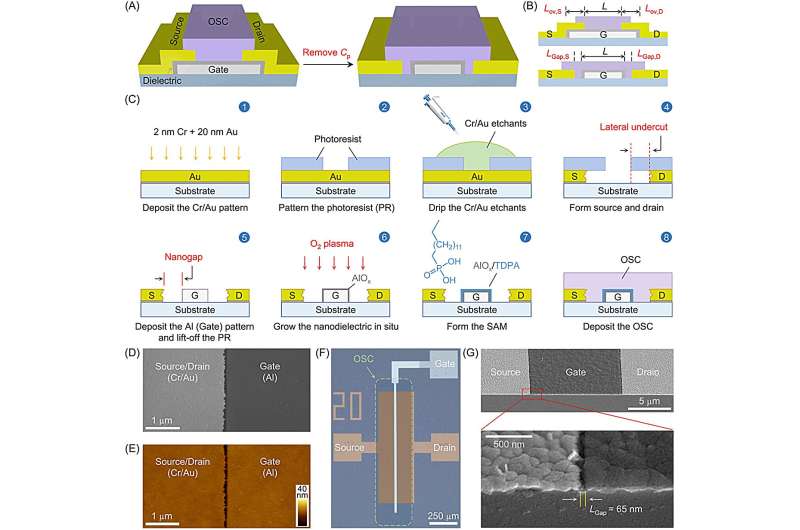This article has been reviewed according to Science X's editorial process and policies. Editors have highlighted the following attributes while ensuring the content's credibility:
fact-checked
proofread
A new dawn for flexible electronics: Eliminating energy waste

Researchers have unveiled an innovative approach to create flexible organic integrated circuits (ICs) devoid of parasitic capacitance. This advancement heralds a substantial enhancement in the dynamic performance and operating frequency of organic thin-film transistors (OTFTs) and rectifying diodes, charting a course toward the realization of high-performance, cost-effective, and energy-efficient flexible electronics.
Organic integrated circuits (ICs) have long been hindered by the presence of parasitic capacitance, which degrades circuit performance by reducing operating speed and increasing heat generation. Traditional methods to minimize parasitic capacitance have faced a trade-off between manufacturing costs and accuracy.
In a study recently published in SmartMat, a team from Nanjing University presents a cost-effective dual self-alignment (d-SA) technique. This method adeptly eradicates parasitic capacitance through the meticulous alignment of electrodes without any overlap, employing a straightforward photolithographic process.
The research team's d-SA method innovates the production of organic thin-film transistors (OTFTs) and rectifying diodes on flexible substrates, effectively eliminating parasitic capacitance by creating sub-100 nm gaps between electrodes. This achievement stems from a cost-effective and simple process that significantly boosts device performance.
A key demonstration of this technology's potential is seen in the development of five-stage ring oscillators that exhibit signal propagation delays as low as 5.8 µs per stage with a 20 V supply voltage-marking a considerable advancement over traditional technologies.
The d-SA technique ensures precise electrode alignment without overlap, introducing ultra-narrow gaps that prevent parasitic capacitance, thereby enhancing circuit efficiency and speed. This breakthrough promises flexible electronics capable of reliable performance at lower power levels and substantially reduced energy loss, with the five-stage ring oscillators showcasing dramatically improved performance, including exceptionally low signal delays at reduced voltage requirements.
Lei Zhang, a lead researcher on the project, stated, "This breakthrough not only challenges the existing limitations faced by organic electronics but also opens up new pathways for the development of flexible and large-area integrated circuits. Our method addresses the critical issue of parasitic capacitance, offering a viable solution for the next generation of flexible electronics."
This pioneering work, blending meticulous engineering with cutting-edge chemistry, marks a pivotal step towards the next generation of flexible, high-performance electronics, enhancing how we develop wearable tech, bendable screens, and electronic textiles.
More information: Baichuan Jiang et al, Flexible organic integrated circuits free of parasitic capacitance fabricated through a simple dual self‐alignment method, SmartMat (2024). DOI: 10.1002/smm2.1273


















